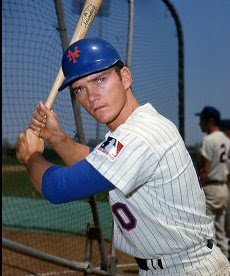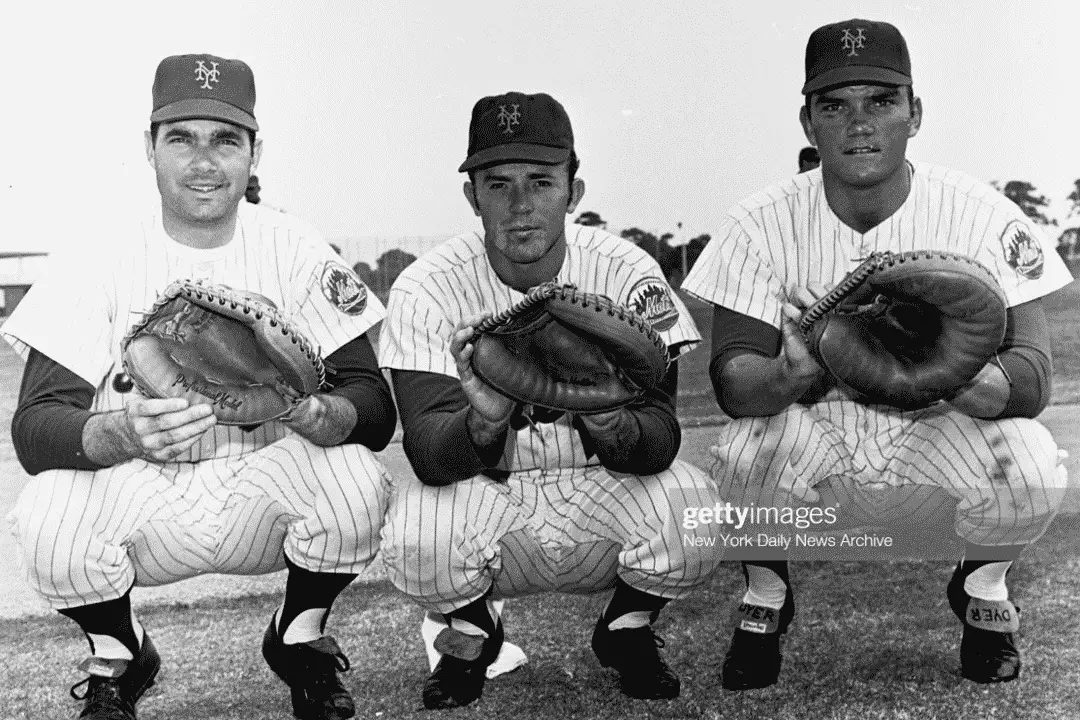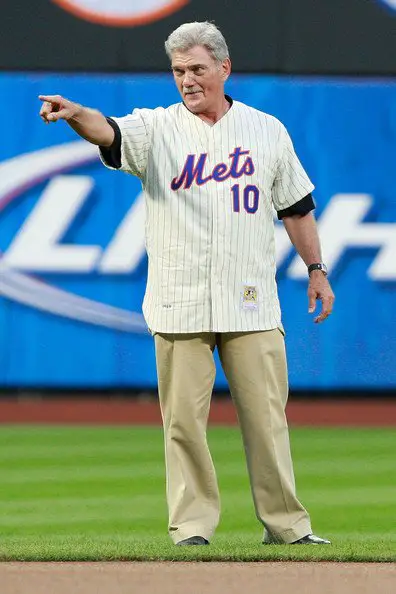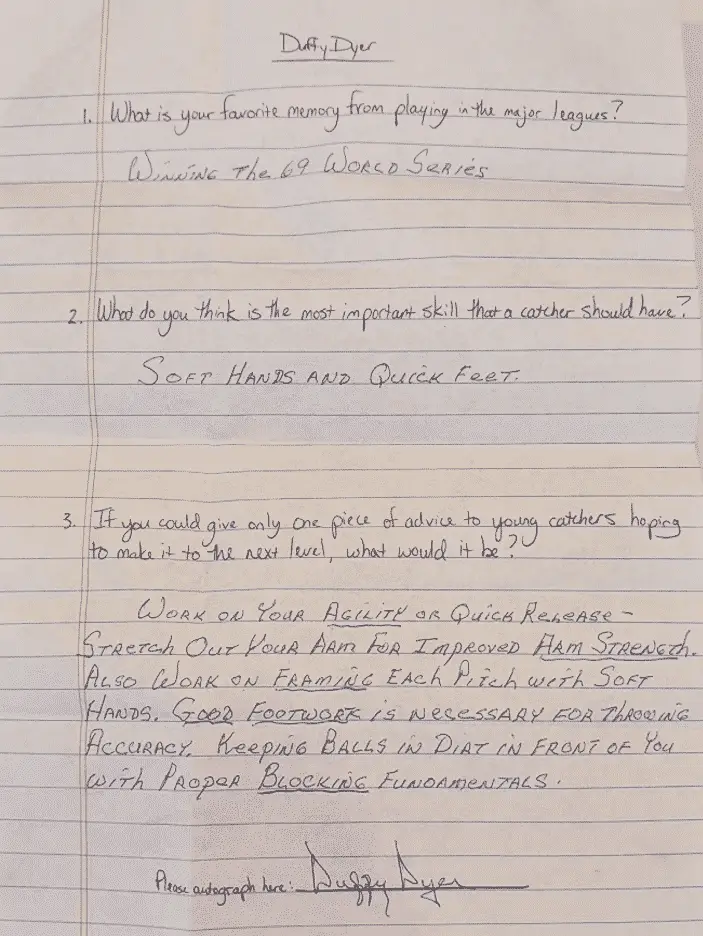Pro Perspective: Duffy Dyer

Pro Perspective: Duffy Dyer
Teams
- New York Mets, 1968 – 1974; Pittsburgh Pirates, 1975 – 1978; Montreal Expos, 1979; Detroit Tigers, 1980 – 1981.
Journey from Ohio to the College World Series
Duffy Dyer (whose real first name is Donald) was born on August 15, 1945 in Dayton, Ohio.
As a kid, his parents moved from Ohio to Arizona and Duffy became a multi-sport athlete at Cortez High School in Phoenix.
From there, he went on to Arizona State University to play Baseball. At ASU he played for legendary coach Bobby Winkles, and he shared the field with future MLB all stars Sal Bando and Rick Monday.
In 1965, Duffy’s Sun Devils defeated Ohio State to win the College World Series.
In June of 1965, Duffy Dyer was drafted by the Milwaukee Braves in the 38th round of the draft, but he didn’t sign.
Interestingly, up until this point Duffy had played mostly in the outfield. He didn’t switch to catching until the 1966 season!
After a stellar 1966 college campaign he was drafted again. This time, the New York Mets picked him up in the first round (ninth overall) in the secondary phase of the draft, and he signed.
From the College World Series to the MLB World Series
After signing with the Mets, Duffy was shuffled around to multiple minor league teams in late 1966, 1967, and 1968.
At the end of the 1968 he was called up to the big leagues, making his MLB debut against the Philadelphia Phillies on September 1, 1968.
He started the game behind the plate and went one for three at the plate, hitting a single to left field in the fifth inning off Phillies pitcher Chris Short.
Of note, Dyer reached first on a fielders choice in the ninth inning and then he was pulled for a pinch runner.
The pinch runner who took Dyer's place? It was none other than legendary pitcher Tom Seaver!

Duffy went on to make the big league club as a backup catcher out of spring training in 1969. He appeared in 29 games in the regular season for the Mets that year – arguably the most famous season in Mets history.
The Mets would go on to win the World Series in 1969, winning 4 games to 1 over the Baltimore Orioles in the Mets’ first ever world championship.
Duffy would become a Mets mainstay over the next few years. In 1972, he had arguably his best season as a pro, appearing in 94 games and collecting 8 home runs and 36 RBIs, good for a 1.7 WAR.
Pittsburgh, Montreal and Detroit
After the 1974 season, Dyer was traded to the Pittsburgh Pirates for Gene Clines. In Pittsburgh he served as a backup to all star catcher Manny Sanguillen
He remained in Pittsburgh for four season, appearing in an average of 67 games per season in Pittsburgh. While with the Pirates he caught a no hitter, thrown in 1976 by John Candelaria.
Duffy signed with the Montreal Expos for the 1979 season, appearing as a backup to future hall of famer catcher Gary Carter.
He was traded again in 1980, this time to the Detroit Tigers. He appeared in 28 games for Detroit in 1980, and in only two games in 1981. After that season, he retired.
Dyer's Statistics and Post-Playing Career
Looking back, Duffy established a solid reputation in the big leagues for his intangibles and his defensive skills behind the plate.
He caught over 5,000 innings, maintained a career .992 fielding percentage as a catcher, threw out 199 would-be base runners (36% caught stealing average), and collected 9 pickoffs.
Offensively, Duffy finished his career with a .221/.306/.315 slash line, and he collected 441 hits, 30 home runs, and 173 RBIs.
After his playing career ended, Dyer got into coaching. He served as a coach for multiple big league teams, and he was a manager in the minors, in the Atlantic League, and in a college summer league. He is a true Baseball lifer.

Q&A with Duffy Dyer
Duffy Dyer is a former big league catcher who played Major League Baseball in three different decades. He has played on teams with many Baseball hall of famers - names like Nolan Ryan, Tom Seaver, Willie Stargell and Gary Carter.
He also played for legendary managers like Sparky Anderson, Gil Hodges and Chuck Tanner, to name a few.
I wrote Duffy Dyer a few months ago looking for his input on my regular questions for catchers. He graciously answered my questions, as shown below.
Like our other posts in this series, we wanted to share Duffy’s responses with our readers. Our hope is that Duffy’s point of view – as well as the other pro catchers highlighted on our site - will help catchers looking to improve their game.
Here are his responses to my questions, as you can also see in the image below.
Question 1: What is your favorite memory from playing in the major leagues?
Answer: Winning the 69 World Series.
Question 2: What do you think is the most important skill that a catcher should have?
Answer: Soft hands and quick feet.
Question 3: If you could give only one piece of advice to young catchers hoping to make it to the next level, what would it be?
Answer: Work on your agility or quick release – stretch out your arm for improved arm strength. Also work on framing each pitch with soft hands. Good footwork is necessary for throwing accuracy. Keeping balls in dirt in front of you with proper blocking fundamentals.

Spoken like a true coach! In fact, when I read Duffy’s answer to this last question I immediately picture him as a coach giving the catchers on his team direction on what to work on.
In his responses to just these last two questions alone, there are a ton of things that catchers can focus on improving to become better overall backstops.
Thanks for Reading
We hope you found this post to be interesting and informative.
We have a few more Pro Perspectives that we plan to post and we will continue to write them in the near future. Stay tuned!
Scott Perry
Scott Perry is the owner and lead author at Catchers Home. He's a former baseball player, a current coach, a husband and a Dad. He remains as passionate about baseball today as he was as a kid.
